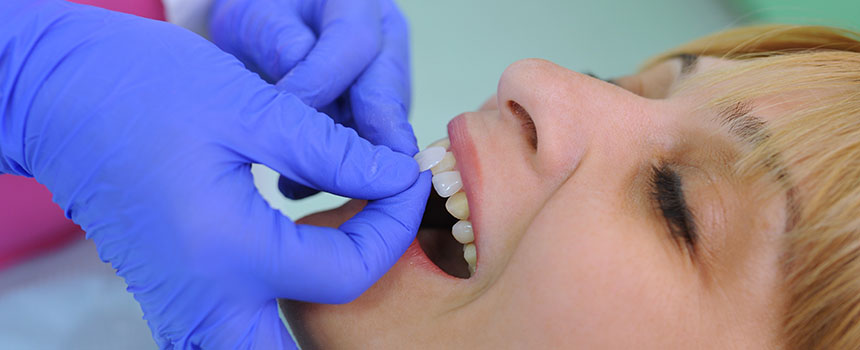
Dental Veneers and other Bonded Restorations
Dental veneers, also known as ceramic/porcelain veneers, are very thin pieces of ceramic that resemble the outer surface of your teeth. Dental veneers are made from quality ceramic materials to fit your specific condition, making them not only strong and durable but also natural-looking ensuring the best possible esthetic result. Bonding is a term that means the process of using chemical adhesive to bond the veneer onto the front side of the tooth.
The most frequently asked question is whether you are a suitable candidate for dental veneers. Dental veneers are used as a conservative option for dental crowns.
Indications for Veneers:
- Severely stained or discolored teeth
- Unevenly spaced between teeth
- Teeth that are chipped or crooked
- Holes and spaces, especially at the front teeth
If you have any of the conditions listed above, but no signs of extensive decay, gum disease or severe teeth malignment is present, then dental veneers are the best solution for you.
Dental veneers are usually made from 2 different types of materials, resin composite or porcelain/ ceramic. While both are effective, their usage is greatly varied depending on your objectives.
Composites veneers (direct) are often done in a single visit using preformed or custom templates. The procedure involves a simple bonding of enamel directly onto your tooth’s surface. Ceramic (indirect) generally is long-lasting as it doesn’t discolor or break down. This type usually requires two visits, more time and expertise.
Procedure for Veneers
When you first come in for the initial examination at our clinic, we take X-rays, photos and moulds to fully study your bite and tooth structure. A detailed treatment plan will then be formulated and discussed. Communication is a key factor in order to ensure a successful final result.
Veneer preparation methods involve some tooth reduction by lightly buffing the outer surface to allow the added thickness of the veneer. In most cases, your teeth will only be reduced by 0.5 mm to 1.0 mm. Some situations require reductions up to 1.0 mm to 2.0 mm.
We avoid using metal as there are newer materials such as zirconium oxide, which is a material used in the most demanding technical environments known to man. This material offers superior function, aesthetics, longevity, and gingival health.
A “try-in” phase is necessary before the final cementation because we want to try on the new set of veneers and check the color, size, transparency whether they fit your likings or not. The temporary veneers, allow adjustments or changes you would like to make in shape, size, and color. These changes will then be translated into your permanent veneers, so good communication between you, your dentist and our dental lab specialist is important in achieving your new smile.
On your final appointment, your temporary ones are removed, cleansed then using special cement, we attach your final dental veneers permanently onto your tooth surface.
